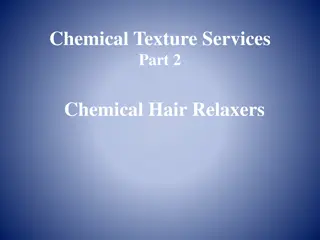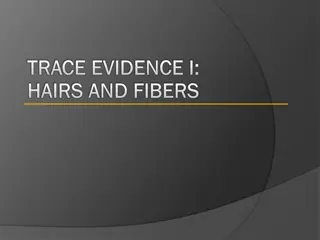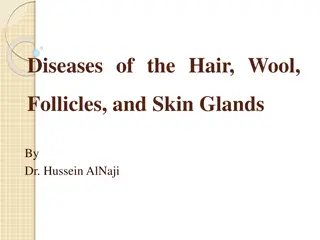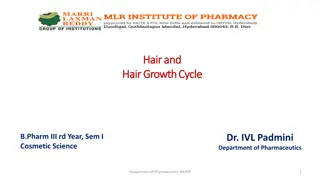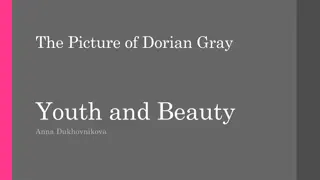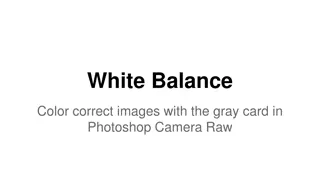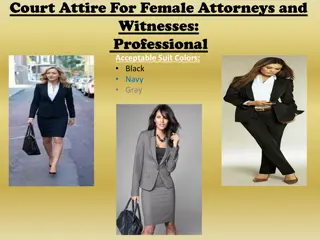Understanding the Science Behind Gray Hair
Exploring the reasons behind gray hair, this project delves into the role of melanin levels and the impact of hydrogen peroxide (H2O2) accumulation in hair follicles. Catalase enzyme synthesis and its effect on achromotrichia (hair turning gray) are also investigated through experimental activities. By uncovering these mechanisms, the project sheds light on the natural process of hair graying with age.
Download Presentation

Please find below an Image/Link to download the presentation.
The content on the website is provided AS IS for your information and personal use only. It may not be sold, licensed, or shared on other websites without obtaining consent from the author. Download presentation by click this link. If you encounter any issues during the download, it is possible that the publisher has removed the file from their server.
E N D
Presentation Transcript
Nature Sunday Academy, 2015-2016 Nanotechnology and Biotechnology-project 2 Why Does Hair Turns to Gray Why Does Hair Turns to Gray Yuqian Xing, Minh Duong, Xiao Liu, Julia Zhao Department of Chemistry, University of North Dakota Grand Forks, ND 58202
Variety of the Hair Colors How many colors for human hair? Hair colors are associated with ethnic groups and can be separated into 6 kinds: Blond, Blond brown, Brown, Brown black, Black, Red.
What decide the hair colors? Pigment: melanin Black and brown eumelanin Molecular Structure of eumelanin Various amounts and ratios of two different types of melanin result in the variety of the hair colors
The reason which causes hair color to turn gray when people get older is the alteration of melanin level. Any other reason? New research discovery: H2O2
Knowledge about enzyme? Catalase 2 H2O2 2 H2O + O2 The other main reason of achromotrichia (hair turn gray) is the reduction of catalase synthesized when people aging, which causes the accumulation of H2O2 in hair follicle.
Experimental activity 1-Hair in H2O2 Step 1: Prepare three empty clean vials.
Experimental activity 1-Hair in H2O2 Step 2: Add 20 ml of solution to each vial. is pure water, used as a negative control. and are 1M H2O2;
Experimental activity 1-Hair in H2O2 Step 3: Add 100 l catalase to vial obvious to see the bubbles generated in the solution. gradually and slowly. It is
Experimental activity 1-Hair in H2O2 Step 4: Wait for about 10 minutes until little bubbles observed in the vial, then put the hairs in each vials.
Experimental activity 1-Hair in H2O2 Step 5: After 2-3 hours incubation, color fading of hair is observed in vial only .
Experimental activity 1-Hair in H2O2 The reaction is slow. If goes to 24 hours, the results will be:
Experimental activity 2- Color bleached by H2O2 Step 1: Prepare three vials with 20 ml of dye solution. 1a 2a 3a
Experimental activity 2- Color bleached by H2O2 Step 2: add 100 ul catalase to vial 2 and 1ml H2O2 to vial 1 and 2. 1a 2a 3a
Factors may contribute to gray hair Stress Life style: nutrition, sleep well Reduce stress and live in a health life style





